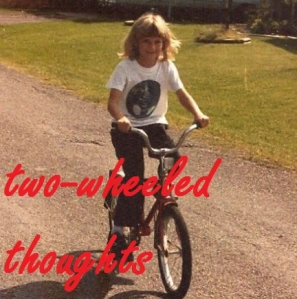Note: I am away for my residency period at school for two weeks or so. This is a previously scheduled post. I will respond to comments, but not as quickly as usual. Thanks for your patience, and thanks as always for stopping by.
 Sock! What a treat! I know I just posted some predictions for best books of the year, but we have a new contender. This was a wildly fun, engrossing little volume.
Sock! What a treat! I know I just posted some predictions for best books of the year, but we have a new contender. This was a wildly fun, engrossing little volume.
Sock is part of Bloomsbury’s Object Lessons series, which appeals to me for reasons I assume are obvious now, after this increasingly object-obsessive semester. When I found out about the series, I exercised restraint and purchased only three books: Sock, Hood, and Souvenir.
Kim Adrian’s task here was to write about the sock. What is a sock, what is its job in the world, where did it come from, what is its significance? You know, just the basics. It’s a remarkable ambition in the first place, for any object (others in the series include Burger, Shopping Mall, Eye Chart, Tree, Cigarette Lighter… as well as the less object-like Silence and Doctor). To quote one of the book’s blurbs:
The Object Lessons series achieves something very close to magic: the books take ordinary–even banal–objects and animate them with a rich history of invention, political struggle, science, and popular mythology. Filled with fascinating details and conveyed in sharp, accessible prose, the books make the everyday world come to life. Be warned: once you’ve read a few of these, you’ll start walking around your house, picking up random objects, and musing aloud: ‘I wonder what the story is behind this thing?’ (Steven Johnson, author of Where Good Ideas Come From and How We Got to Now.)
I couldn’t have said it better myself, so I didn’t.
So, the sock. Adrian’s table of contents offers an introduction and three sections: “Socks and evolution,” “Socks and desire,” “Socks and industry,” followed by a postscript: “Instructions for darning a sock.” (The back-of-book blurb begins, “Kim Adrian’s Sock is the darndest thing,” and that gave me FITS.) Adrian acknowledges the weirdness of her project. She can’t really account for her interest in socks, except that they are “intimate and essentially domestic,” and the domestic has always appealed to her. She usually writes about personal subjects, she tells us (“personal essays, memoir, that sort of thing”), and figured socks would fit in, because they are personal, in the sense that we wear them against our skin and they smell of us; but in fact this was a wildly wide-ranging research project. To paraphrase Johnson’s blurb, above, this book wanders through human anatomy and evolution, world history, politics, sex, and industry. If Adrian is fixated on domesticity, I am fascinated by trivia, such as (on page 9) the fact that we get our understanding of when humans first began wearing clothing from the study of lice. Textiles are perishable; but the evolution of specialized lice species, and their development into head lice, pubic lice, and body lice respectively, allows archaeologists to track textile development. This fact made me exclaim joyfully aloud, and I got to read the passage to a roomful of brewery employees. We were in a sensory class about the history of yeast species, so it’s all related, after all.
Adrian moves on to human anatomy and our unique position as vertically aligned bipedal creatures, its effect on our sexual practices and the way we walk, balance, the importance of the big toe, and much more. Skeletal structure has much to do with socks. Then there is the history, of course, of socks: from hay stuffed in a shoe-like cage, to woven foot wrappings, to fitted and knitted socks. She touches on the Industrial Revolution, delayed by Queen Elizabeth’s denial of a certain patent, which if granted, Adrian speculates, might have moved that Revolution up by some two centuries, and “what strange wormhole of alternate reality we might have tumbled down” in that case! Next we have sock and foot fetishes (the latter properly not a fetishism but a partialism), and sex; Jung and Freud, and the art of Egon Schiele, an Austrian Expressionist who left the feet off many human subjects but put socks on his trees. Finally, the sock industry takes us into concepts of fast fashion and slow fashion (a sort of throwback movement that depends on surpluses of both time and money). Here Adrian returns to an earlier concern with knitting socks, something she’s tried and not much succeeded at; she has great respect for those who do knit socks. Then the promised primer on darning.
All this in under 120 pages, and every moment of it was a delight to read, in Adrian’s mildly self-deprecating, often humorous, but absolutely serious-about-socks prose.
Some of my personal highlights on this wild ride included learning that Ned Ludd–he of the Luddite Rebellion–was a stocking maker, and started his movement by smashing two stocking frames in Nottingham. Did y’all know that? Also Adrian’s attention to words: ‘mundane’ (as in socks) comes from the French mondaine, or ‘of this world,’ and links us back to ‘pedestrian,’ as in Latin ped, as in foot. And ‘prosaic’ from ‘prose’ comes from Latin provorsus, which is pro– (forward) and vorsus (turned), as in oriented in forward-facing fashion, as in walking. Can’t make this stuff up, folks. Or, did you know that our feet possess even more nerve endings than our genitals?
I feel like I’ve written half as many words now as Adrian put into her whole book, this slim little marvel of trivia and attention to the overlooked. I am reminded of Mark Doty’s devout study of small details, his appreciation that “in still life the familiar is limned with an almost hallucinatory clarity, nothing glanced over or elided, nothing subordinate to the impression of the whole.” In other words, this book was a near-religious experience for me. I can’t wait to read more Object Lessons.
I can’t believe I’m doing it for the third time this year already, but here we are…
Filed under: book reviews | Tagged: nonfiction, Object Lessons, objects |







[…] from Bloomsbury’s Object Lessons series to follow Socks, which so delighted […]
[…] is the third that I’ve read in the Object Lessons series (Sock, […]
[…] to tell this story for as long as I can remember wanting anything at all,” writes Kim Adrian (Sock): the story of her mentally ill mother, how she got this way and what Adrian can or should do about […]
[…] reading life, for which I’m grateful. Recall how I loved and raved about Adrian’s Sock. That review posted just as I headed off to residency, and I heard almost immediately from her […]
[…] Sock, Kim Adrian – nonfiction […]
[…] can see I got a bit prickly about Shipping Container. What I loved most about Sock and Souvenir was how widely they ranged over their subjects, how they let the simple sock or […]
[…] Object Lessons series has been really up-and-down for me. I’ve found some transcendent books (Sock, Souvenir), but also some that failed to impress. And now this: Hair pretty much kept me angry […]